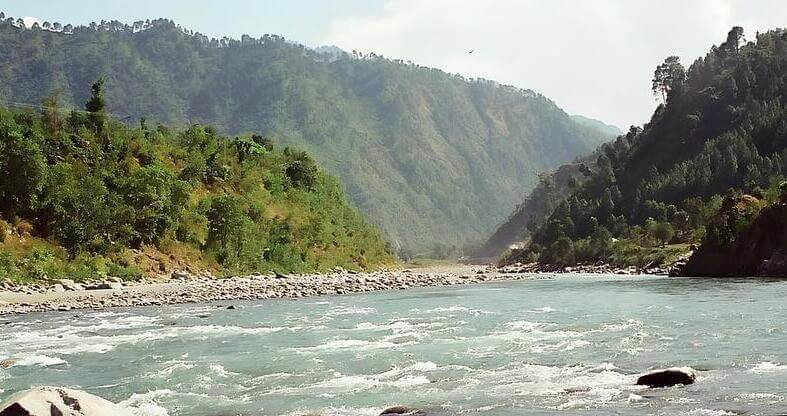By Samiullah
The Indus Water Treaty (IWT), which was signed in 1960 by India and Pakistan, through the mediation of the World Bank, has historically been viewed as a tool of water diplomacy.

This agreement allocated the eastern rivers (Ravi, Beas, and Sutlej) for India, while assigning the western rivers (Indus, Jhelum, and Chenab) to Pakistan. The primary aim was to oversee transboundary water resources in a way that would be independent of political pressures, with the goal of separating water-sharing matters from broader political disputes among the two countries.
However, the cooperative aspect of the treaty has diminished over the years, and it is now more commonly viewed as a tool of geopolitical maneuvering. Elements such as climate change, rising water usage, evolving regional political dynamics, and ongoing territorial disputes have heightened the strategic importance of water, turning the IWT into a point of conflict. This shift is particularly evident in India’s reactions following terrorist acts, where water diplomacy has become closely linked to the narrative surrounding national security.
India’s Strategic Shift in Water Diplomacy
Since the early 2000s, numerous terrorist attacks have taken place on Indian territory. India accuses Pakistan of these attacks, but such accusations have not been proven. Furthermore, Pakistan has always denied any involvement in these attacks, and it has voluntarily offered to cooperate in the investigations. However, these statements by Indian officials have triggered strong retaliation, and tensions between the two countries have further intensified.
The attack on the Indian Parliament in 2001, the 2008 Mumbai attack, and the Uri attack in 2016 prompted India to issue direct warnings about possibly reevaluating or ceasing certain elements of the IWT. Following the Uri incident in 2016, Prime Minister Narendra Modi notably remarked, “Blood and Water cannot flow together,” prompting India to cease IWT commission meetings.
Tensions escalated further after the 2019 Pulwama attack, which resulted in the deaths of 40 Indian paramilitary personnel. In response, India expressed its intention to make full use of its allocation from the eastern rivers, which has raised alarms in Pakistan about a potential water crisis. In January 2023, India officially notified Pakistan via the World Bank of its intention to suspend the treaty.
The recent terrorist incident in Pahalgam on April 22, 2025, significantly heightened tensions between India and Pakistan. In retaliation, India initiated Operation Sindoor aimed at dismantling cross-border terrorist infrastructure alleged to be responsible for the attack.
These developments have exacerbated bilateral relations and prompted even more concerns regarding the future of the Indus Water Treaty. Furthermore, these incidents indicate that weaponizing a treaty after every internal security failure is not a good strategy. Such measures compromise the neutrality of the IWT and pose a risk of transforming water from a shared resource into a geopolitical weapon.
The Risk of Regional Spillover
India`s strong position on the IWT may have significant regional implications, particularly with its neighboring countries like China, Afghanistan, and Iran. India is a downstream nation on the Brahmaputra River, which begins in China as the Yarlung Tsangpo. China has already constructed numerous dams along this river, and there are reports indicating plans for a large hydropower project in the Tibet Autonomous Region, such as Medog Hydropower Project, that could affect the water flow downstream into India and Bangladesh. If India sets a precedent, by unilaterally altering or threatening to exit the IWT, it may motivate China to pursue a similar approach, especially in times of political tension.
The situation with Afghanistan is similar. Afghanistan shares the Kabul River with Pakistan, which is a critical water source for Pakistan’s Khyber Pakhtunkhwa province. Afghanistan has built several dams (such as Chak, Mahipur, Sarobi, Naghlu, and Darunta) in recent years, with additional projects planned, including the Shahtoot Dam, which has Indian support. Although these initiatives are vital for Afghanistan`s energy and water requirements, Pakistan considers them a threat, given its water scarcity and the possible reduction in downstream flow. These apprehensions are intensified by India`s involvement, adding further complexity to the political aspects of transboundary relations,
Furthermore, Afghanistan`s management of the Helmand River, which it shares with Iran, has led to disputes, particularly concerning the Hamoun Wetland, which is facing drying problems, resulting in both environmental and political tensions. Iran has accused Afghanistan of violating water-sharing agreements, and any further dam building could escalate conflicts. Turkmenistan is also closely monitoring Afghanistan`s handling of shared rivers, as it could lead to regional disputes involving several nations.
Moreover, the collapse or deterioration of the IWT could lead to heightened competition among countries to dominate shared water resources, resembling an arms race. Nations might seek to build more dams, alter natural water flows, or forge exclusive alliances, increasing distrust and heightening the potential for strategic miscalculation.
Conclusion
IWT, previously viewed as a symbol of collaboration amidst conflict, is currently at a pivotal moment. Utilizing water as a lever for diplomacy jeopardizes not only the relationship between India and Pakistan but also the overall stability of the region, which includes China, Afghanistan, and Iran. In an era marked by climate issues, growing populations, and limited freshwater resources, it is imperative to uphold agreements regarding transboundary water for both environmental protection and the prevention of conflict.
Rather than using water as a source of pressure, regional players should reaffirm their commitment to equitable, science-driven, and apolitical water management. Improving dialogue frameworks, incorporating climate resilience into agreements, and involving all riparian countries in regional initiatives, could transform the perception of water from a source of conflict to a source of cooperation.
Author: Samiullah – BS International Relation Student, Research Intern at Balochistan Think‑Tank Network (BTTN), Quetta, Pakistan.
(The views expressed in this article belong only to the author and do not necessarily reflect the editorial policy or views of World Geostrategic Insights).







